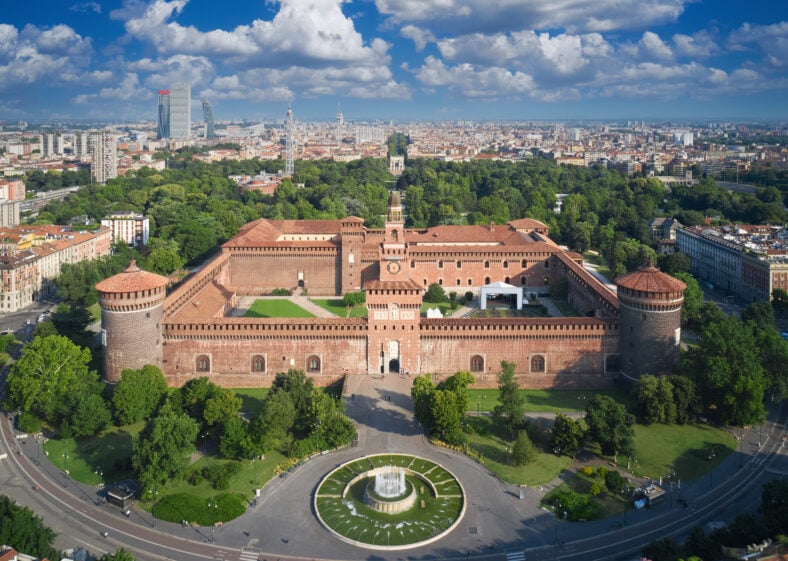Underneath A 575-Year-Old Castle, Secret Tunnels Were Found, And Leonardo da Vinci Hinted At Them Being There

Beneath the Sforza Castle in Milan, Italy, there are hidden underground passageways. Their existence had been hinted at long ago by Leonardo da Vinci, and it turns out that they’re not just rumors.
Recent ground-penetrating radar and laser scans have revealed a number of secret tunnels. According to researchers from the Polytechnic University of Milan, some of them may even have been used by the Duke of Milan to privately visit his beloved wife’s crypt. Others were likely used by the military.
The current version of the Sforza Castle was commissioned in 1450 by Francesco Sforza, the Duke of Milan. It was built on the ruins of a previous fortress that was constructed between 1358 and 1370 but destroyed during political instability in 1447.
In 1494, Francesco’s second son, Ludovico Sforza, also known as Ludovico il Moro, took over from his father. The newly installed Duke called on multiple artists to travel there and decorate the castle with frescoes.
The artists included the architect Donato Bramante and the painter Leonardo da Vinci, who would serve the Duke for years.
During that time, da Vinci began to work on an unfinished equestrian monument dedicated to il Moro’s father, Francesco.
For their study, the team of researchers visited the site with ground-penetrating radar equipment to map the subsurface of the castle and determine once and for all if the underground corridors existed.
These tools emit electromagnetic waves that travel through the soil and bounce back signals that give information on soil composition and ground density.
“The goal is to create a digital twin of the Sforza Castle, a digital model that not only represents the current appearance of the Castle but also allows you to explore the past, recovering historical elements that are no longer visible,” said Franco Guzzetti, a geomatics professor at the Polytechnic Institute of Milan.

Sign up for Chip Chick’s newsletter and get stories like this delivered to your inbox.
The survey revealed several passageways buried a foot or more underground in an area that used to be surrounded by a ghirlanda, or outer wall.
Some of the structures are believed to have served defensive and military purposes, according to da Vinci’s sketches and notes that refer to hidden underground tunnels.
One of the tunnels had a very specific purpose. It stretched nearly two-thirds of a mile from the castle’s outer wall to the church of Santa Maria delle Grazie, allowing il Moro to privately grieve his wife, Beatrice d’Este, who died during childbirth in 1497.
It is said that the Duke never fully recovered from the loss of his wife. He entered a very intense mourning phase, during which time he created a cult that worshipped his wife. This may have contributed to his downfall a few years later.
“The castle is not just a monument; it is a repository of stories waiting to be told, each layer of stone representing the lives and legacies of those who came before,” wrote the researchers.
“By exploring these hidden depths, researchers are ensuring that the castle remains alive in the collective consciousness of both locals and visitors.”
More About:News